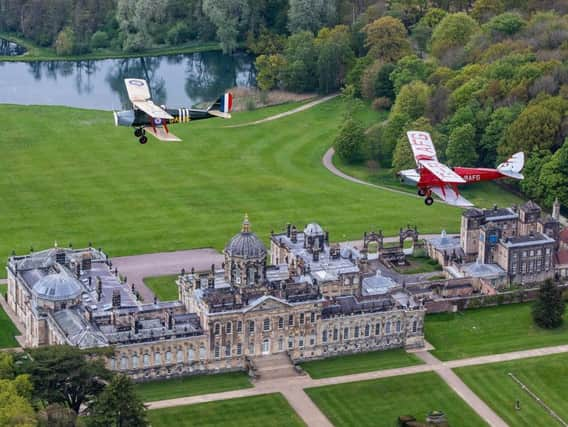You can take a flight in the Tiger Moth aircraft used to train RAF pilots in the Second World War


In that same aircraft, from an airfield in Sherburn-in-Elmet, near Selby, the untrained man and woman can also take to the skies.
The Tiger Moth Experience Limited offers people the opportunity to take a flight in one of the few remaining airworthy versions of the biplane. It operates the RAF Benevolent Fund Tiger Moth Squadron, pictured above on a flight over the Castle Howard estate in North Yorkshire.
Advertisement
Hide AdAdvertisement
Hide AdMore than 8,800 Tiger Moths are recorded as being built in the plane’s period of production between 1931 and 1944.
Though it was primarily used to give pilots their elementary flying training during the Second World War, the aircraft, designed by Geoffrey de Havilland and made by the de Havilland Aircraft Company, was not retired from service until nearly 15 years after the conflict ended.
It was adapted for military use from the company’s Gipsy Moth model, tweaked, says the Tiger Moth Experience, to give instructors greater access to bail out if a student went wrong.
After their training, pilots would move on to fighter aircraft including the Spitfire and Hurricane, or bombers such as the Lancaster and Wellington.
Advertisement
Hide AdAdvertisement
Hide AdAccording to the RAF Museum, following the 1940 Dunkirk evacuation, several anti-invasion ideas were considered for aircraft and that same year, 350 Tiger Moths were fitted with light bomb racks to attack enemy troops which attempted a landing.
“Fortunately none of these ideas had to be used, leaving Elementary Flying Training Schools to their vital role of pilot training,” it says.
Today, sixty years after being retired, the aircraft in Yorkshire plays a different, but equally important role.
Each flight undertaken raises money for the RAF Benevolent Fund, helping its work to support the welfare of serving and former members.
Technical details: Canon 1DX MKII, 1/250 sec, F4, Iso 500, 70-200mm F2.8 lens.